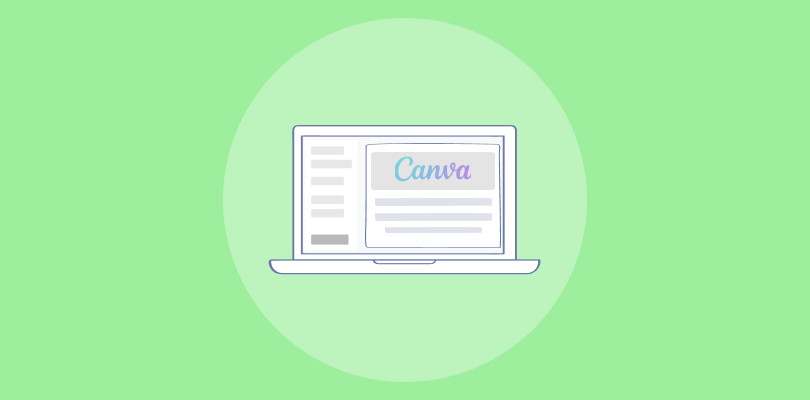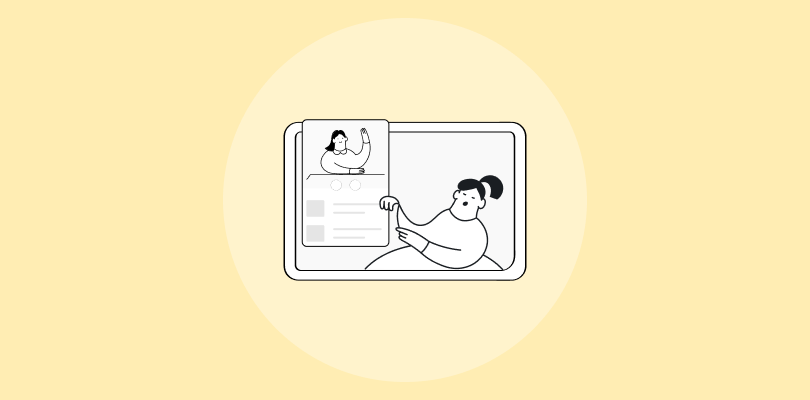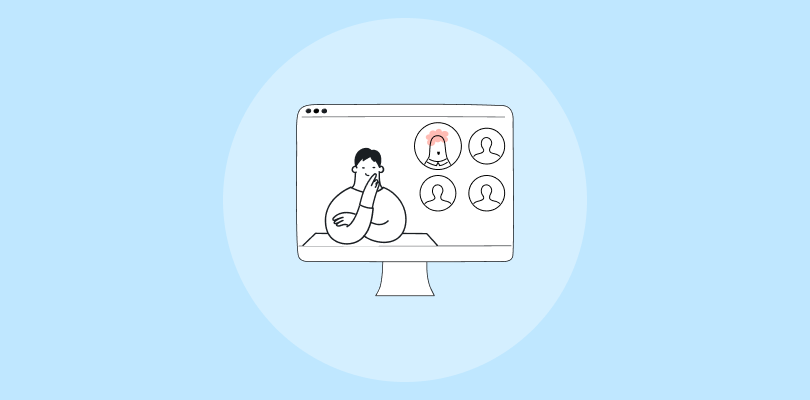Airlines hate them, hotels ignore them, but marketers swear by them. Webinars have quietly replaced the need for countless in-person conferences and workshops.
Why spend weeks organizing a seminar, traveling for attendance, and losing money, when a single virtual event can achieve the same results with ten times the reach?
I’ve analyzed over 1,000 digital events in the last decade and built content for 300+ training campaigns. In the process, I learned that webinars succeed when they combine clarity of purpose, engaging delivery, and data-driven improvement.
So in this blog, I’ll help you understand:
- What is a webinar, and why is it important
- The most important types of webinars for hosts
- Key features and benefits of webinars for the users
By the end, you’ll be confident to host a webinar and turn your first online seminar into a meaningful success.
What Is a Webinar? (Definition & Meaning)
A webinar is short for web-based seminar, and at its core, it is an online event where one or more presenters share knowledge, ideas, or training with a remote audience in real time.
Unlike a simple video, a webinar is designed to be interactive. Attendees don’t just watch; they can participate by asking questions in the chat, responding to polls, or joining discussions during Q&A.
You can consider it a seminar or workshop, but hosted through the internet instead of a physical room. Webinars can be live, recorded, or a mix of both, giving flexibility to hosts and participants.
They typically include video, audio, and slides, with features like screen sharing and digital whiteboards to make the session more engaging. In simple terms, a webinar turns distance into connection by combining presentation with interaction.
And when global webinar and virtual events market is set to reach $ 4.4 billion, you can always believe in their efficacy.
What Are the Types of Webinars?
As a host, I have experienced that the type of webinar you choose will directly shape how your audience experiences your session and how effectively you achieve your goals.
Broadly, webinars can be divided into two categories: those defined by delivery style and those defined by purpose.
By understanding both, you can match the right format with your objectives, whether that’s educating, training, generating leads, or aligning teams.
Category 1: Webinars Based on Delivery Style
Delivery style determines the structure and flow of your session. It influences how interactive you can be, how much control you have over content delivery, and how scalable your efforts are.
1. Live Webinars
A live webinar is hosted in real time, creating immediacy and natural interaction. Attendees join at a scheduled time, much like they would for an in-person seminar, but with the convenience of joining from anywhere.
As the host, you can respond to questions, run polls, and encourage live chat discussions. The energy is higher, and the engagement feels personal.
Use Case: A SaaS firm conducting a product demo webinar to showcase a new feature and handle objections instantly.
“But not every host can be present in real time, which is why many turn to automated webinars.”
2. Automated Webinars
Automated webinars, also known as recorded webinars or on-demand sessions, run without you being present. The content is pre-recorded and set to play at specific times or on demand.
This format ensures consistent delivery and allows you to scale your reach beyond live attendance. Interactive features, like pre-programmed polls or chatbots, can still simulate engagement.
Use Case: An online academy scheduling an educational webinar on leadership fundamentals, available to registrants at their convenience.
“Of course, some prefer a balance between efficiency and personal touch, which brings us to hybrid webinars.”
3. Hybrid Webinars
A hybrid webinar combines the polish of recorded content with the engagement of live hosting. You might pre-record your main presentation but join live for introductions, polls, or a Q&A session.
This format is especially useful if your content requires precision but you still want to maintain a personal connection.
Use Case: A marketing agency playing a polished, recorded case study followed by a live webinar Q&A with their strategist.
“And when one session isn’t enough, hosts often create a series to explore topics in depth.”
4. Webinar Series
A webinar series delivers knowledge in a sequence of sessions, often weekly or monthly. Each episode builds on the last, helping you nurture leads and guide participants through a journey. This delivery style is excellent for deep topics that need more than a single session.
Use Case: A training company creating a five-part training webinar series on project management skills.
Before we move on to the next category, would you like to take up an Automated Webinar Challenge? Check it out below:
Category 2: Webinars Based on Purpose
Purpose-driven webinars focus on why you are hosting the session. Defining the purpose ensures your content, tone, and engagement style align with your objectives.
1. Educational Webinars
These are the online seminar equivalents of a classroom, where the aim is structured learning.
As a host, you can deliver tutorials, frameworks, or research-backed insights to position yourself as a thought leader. Educational webinars often include quizzes, polls, and downloadable resources to reinforce learning.
Use Case: A professor hosting an online workshop on global economics with live polls to track student comprehension.
2. Training Webinars
Training webinars are highly practical and instruction-focused. They are widely used for employee onboarding, compliance training, or customer product education. Hosts typically use live demonstrations, screen sharing, or walkthroughs to make the content actionable.
Use Case: An HR manager conducting an internal communication webinar for new hires to explain company policies and software systems.
3. Product Demo Webinars
These webinars are designed to convert. A product demo webinar allows you to showcase your solution, highlight features, and address customer pain points. Hosting them live lets you answer questions directly, helping prospects visualize the product’s value.
Use Case: A software firm inviting qualified leads to a live webinar demonstrating its new analytics dashboard.
4. Marketing Webinars
A marketing webinar is more about building trust than making a hard sell. By offering insights, research, or strategies upfront, you create goodwill before presenting your product as the solution. This value-first approach strengthens authority while naturally nurturing leads.
Use Case: A consulting agency hosting a marketing webinar on digital growth strategies, ending with a free consultation offer.
5. Panel Discussion or Interview Webinars
Panel or interview formats bring multiple voices together. As the host, you facilitate, moderate, and ensure a balanced conversation that delivers diverse insights. This format elevates credibility and attracts audiences who follow your guest experts.
Use Case: A business network hosting a panel discussion webinar with three industry leaders discussing the future of AI in business.
6. Internal Communication Webinars
Internal webinars keep employees aligned and informed. For hosts, this is an efficient way to communicate strategy, share updates, and reinforce company culture—particularly for remote or global teams. Use Case: A CEO delivering a quarterly internal communication webinar to present performance results and outline upcoming priorities.
Key Features That Make Webinars Unique
What makes webinars truly effective is not the technology alone, but the set of features that elevate them from a presentation into a professional, interactive event.
These features are your tools as a host. They determine how you capture attention, build engagement, and deliver value.
1. Real-Time Interaction Creates Connection
The defining feature of a live webinar is that it unfolds in the moment. Attendees can ask questions, respond to polls, or share feedback instantly. This immediacy creates a sense of connection that pre-recorded content cannot replicate.
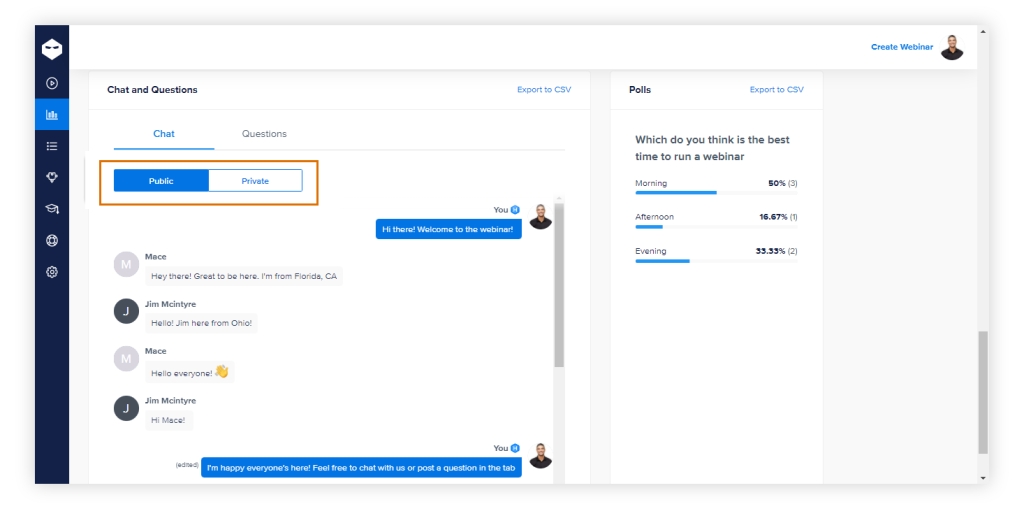
For you as a host, it’s like having a live pulse of your audience; when you see their reactions, you can adjust your delivery, clarify points, or double down on topics that spark interest. The result is a conversation rather than a lecture.
2. Flexible Formats Adapt to Any Goal
Not every audience prefers the same style, and not every goal requires the same format.
That’s why webinars offer flexibility: fully live webinars when you want authentic interaction, recorded webinars when you need scalability, hybrid webinars when you want polish with a personal touch, and even webinar series for progressive learning or long-term webinar engagement.
This adaptability ensures that whether you’re educating, training, or selling, you have a format that fits.
3. Multimedia Brings Content to Life
Words alone rarely carry a session. Webinars allow you to weave together slides, screen shares, videos, and even digital whiteboards to explain concepts in ways that resonate.
Imagine explaining a complex process verbally versus walking participants through a visual flowchart: one confuses, the other clarifies. This variety keeps attention high, supports different learning styles, and strengthens retention of information.
4. Engagement Tools Keep Audiences Active
Polls, live chat, surveys, and Q&A functions are more than add-ons; they are engagement engines. These tools turn a passive online seminar into an interactive experience where attendees play a role.
Asking questions midway, running a quick poll, or inviting opinions keeps participants alert and involved. From your perspective, every interaction is a data point, revealing what resonates, what confuses, and where interest spikes.
5. Recording Extends the Value Beyond the Live Event
A strong feature of webinars is their ability to live beyond the scheduled session. By recording your event, you instantly create a recorded webinar that can be repurposed into training modules, highlight clips, or evergreen marketing content.
This means your effort is multiplied; one hour of delivery can turn into weeks of valuable assets. For busy professionals, this is where efficiency meets impact.
6. Scalability Eliminates Geographic Barriers
Webinars are not limited by walls or borders. Whether your audience is in the same city or across continents, everyone can access your session with an internet connection. This makes webinars ideal for marketing webinars aimed at global prospects or internal communication webinars designed for remote teams.
The scalability ensures your message reaches as far as your ambition takes it, without the costs of travel, venues, or logistics.
7. Analytics Provide a Blueprint for Improvement
Unlike in-person events, where feedback may be anecdotal, most good platforms provide precise webinar reports and analytics. You can see registration numbers, attendance rates, drop-off points, and engagement levels.
This data transforms guesswork into strategy. If you notice attendees drop after 40 minutes, you know to tighten future sessions. If polls reveal strong interest in a sub-topic, that’s your next webinar theme. In short, analytics make continuous improvement possible.
Why Use Webinars: Benefits & Paybacks
Did you know that hosting an online seminar or virtual event offers advantages that go far beyond a standard presentation or workshop?
Here are some of the major benefits of webinars, along with a focus on how they empower hosts to achieve professional and business goals.
1. Cost-Effective Webinar Training and Online Education That Scales
Unlike physical seminars that require venues, travel, and catering, webinars reduce expenses while keeping the learning structured and professional.
Hosting webinar training sessions or online workshops allows companies to deliver consistent online training across teams without logistical strain.
A single digital event can serve hundreds of employees or customers, making webinars one of the most cost-effective learning and development tools.
2. Lead Generation and Webinar Marketing That Drive Business Growth
Every registration for a live webinar, recorded webinar, or hybrid session represents a qualified lead. Details captured during sign-up feed directly into CRM systems and sales funnels.
More importantly, the interactive sessions, like polls, Q&A, and surveys, reveal audience engagement levels and customer needs. This blend of data and interaction makes webinars one of the most reliable forms of webinar marketing for building stronger pipelines and converting prospects.
3. Authority Building Through Educational Webinars and Online Workshops
Delivering consistent value through educational webinars positions any host as a trusted expert in their field. Sharing industry insights, frameworks, and best practices turns a digital event into an authority-building platform.
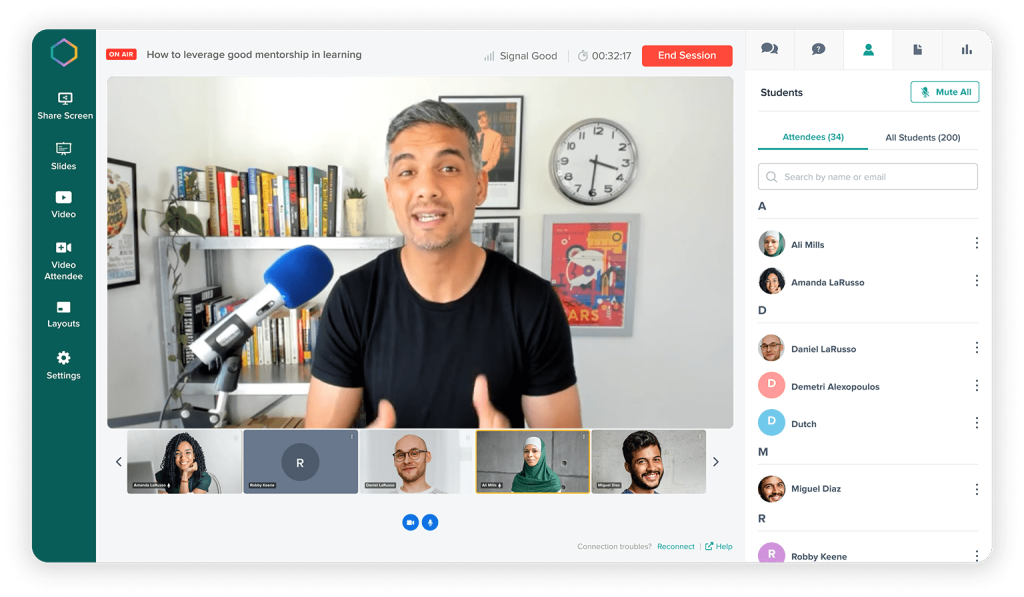
Over time, frequent online seminars or online workshops help establish credibility, allowing organizations to stand out in competitive markets. It’s the difference between being another vendor and being seen as the go-to resource.
4. Scalable Reach and Global Communication Without Barriers
A webinar definition often highlights accessibility, and that’s a major benefit for hosts.
Whether it’s a product demo webinar or an internal communication webinar, these virtual events allow a message to travel across borders in real time.
With modern webinar platforms and webinar tools, geography does not limit hosting. This scalability enables organizations to train employees in multiple regions or connect with international prospects in one digital session.
5. Long-Term Value Through Recorded Webinar Sessions
One of the key benefits of webinars is their reusability.
A recorded webinar doesn’t end when the live event closes—it becomes a resource for future reference. Sessions can be shared as online training modules, broken into clips for social media, or repurposed into blogs and guides.
For hosts, this means every event is not just a moment in time but a lasting piece of content that continues to deliver results.
6. Data and Analytics That Refine Webinar Best Practices
Modern webinar platforms provide deep insights: registration numbers, attendance drop-off points, engagement scores, and even follow-up actions.
For hosts, these analytics are invaluable. They reveal what makes a webinar interactive, where improvements are needed, and how future sessions should be designed.
Over time, this data-driven approach sharpens webinar best practices and ensures every online seminar or digital event performs better than the last.
Having said this, here is an interesting video for you that talks about the TOKYO method of webinars:
Real-World Webinar Case Studies
Here are a couple of examples from organizations that used webinars to grow and transform their businesses.
Sales Market Fit
Generated $20,000–$25,000 value per webinar by using WebinarNinja as a lead magnet and focusing on qualified leads.
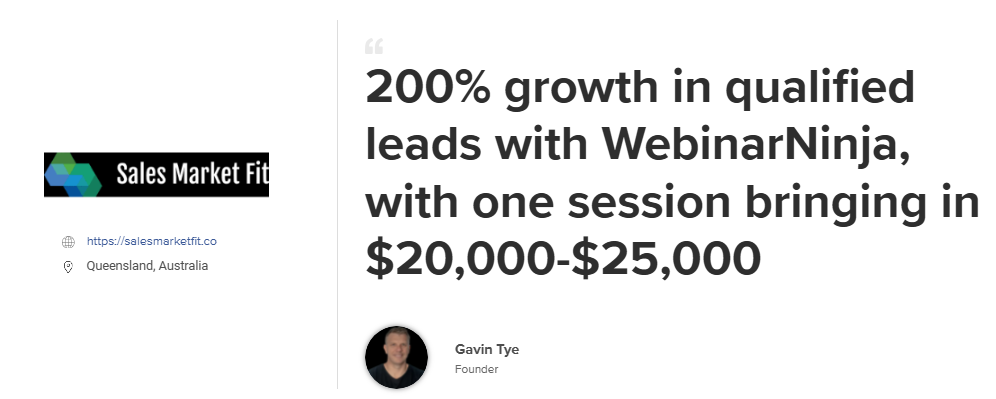
Michael Lancto
Transformed his coaching business with WebinarNinja by delivering polished, interactive training while reducing costs.
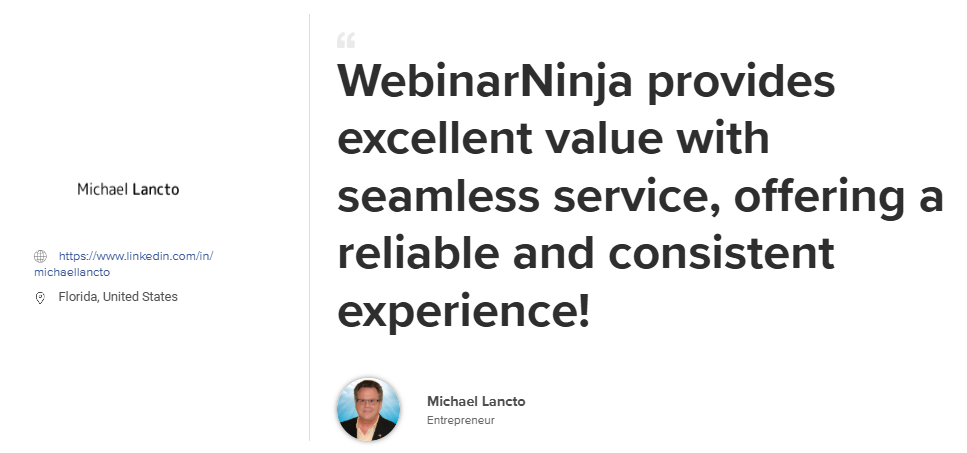
What to Do Next After Understanding Webinars
Understanding the webinar definition, exploring the types of webinars, and recognizing the benefits of webinars is only the beginning. Knowledge without practice rarely delivers results, and the real progress comes when the theory is put into action.
The next logical step is simple: create and host a first session. Start by deciding the purpose—whether it is webinar training for employees, a product demo webinar to generate leads, or a marketing webinar to build authority.
Next, choose a reliable webinar platform that offers tools for audience engagement, recording, and analytics. Record the session, review the data afterward, and refine the approach.
The first attempt does not need to be perfect—it just needs to happen. Practice is what turns knowledge into measurable outcomes.
So, are you ready to create your first webinar?
Frequently Asked Questions
What is the difference between a webinar and a seminar?
A seminar is usually held in person, requiring physical presence, while a webinar is conducted online. A webinar offers features like audience engagement tools, recordings, and scalability, making it more flexible and cost-effective compared to a traditional seminar.
How do webinars help in marketing?
Webinar marketing is a proven strategy for building authority, generating leads, and driving conversions. Hosting an online seminar allows businesses to deliver value, demonstrate expertise, and capture qualified leads through registrations and interactive sessions.
Can webinars be recorded and shared?
Yes. Most webinar platforms include recording features. A recorded webinar can be repurposed into tutorials, on-demand online workshops, or used as evergreen content for future prospects who could not attend the live webinar.
What are the best webinar platforms for beginners?
Popular options include WebinarNinja, Zoom, and GoToWebinar. These webinar tools offer user-friendly interfaces, audience engagement features, and analytics. Beginners should choose platforms that balance ease of use with the flexibility to scale.
What is the cost of hosting a webinar?
The cost of hosting a webinar depends on the webinar platform, audience size, and features required. Many webinar tools offer free basic plans with limited attendees, while paid plans can range from $30 to $200 per month for small to medium sessions. Large-scale virtual events with advanced analytics, branding, or integrations may cost several hundred dollars monthly. Additional expenses might include marketing, guest speakers, or professional equipment.
Want to host a webinar for free?
Use WebinarNinja to teach, improve marketing, and grow your sales.


